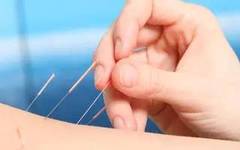Acupuncture, unlike our traditional understanding, does not solely refer to the insertion of silver needles into acupuncture points; it also includes moxibustion, encompassing both needling and moxibustion techniques. Acupuncture plays a significant role in traditional Chinese medicine and is even recognized abroad as one of China’s new four national treasures.What is Acupuncture? Acupuncture is a collective term for needling and moxibustion techniques. Needling involves the insertion of metal needles into specific acupuncture points on the body, utilizing manual techniques to adjust the flow of Qi (气) and blood (血); moxibustion involves rolling mugwort (艾绒, ài róng) into sticks or cones, igniting them to warm the skin’s surface at acupuncture points, achieving the purpose of warming the meridians and harmonizing Qi and blood.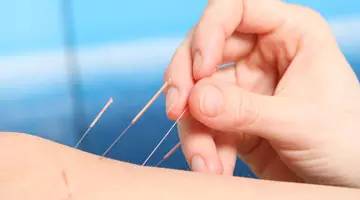 Needling Techniques
Needling Techniques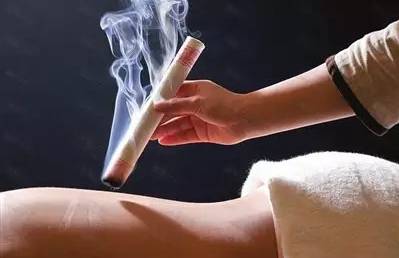 Moxibustion TechniquesAcupuncture is a unique method of treating diseases in China, characterized as a form of “external treatment for internal diseases.” Acupuncture aims to open the meridians, regulate Qi and blood, restore relative balance between Yin (阴) and Yang (阳), and harmonize the functions of the organs, thereby achieving disease prevention. Acupuncture therapy is part of the heritage of traditional Chinese medicine and is a unique ethnic medical method in our country. For thousands of years, it has made outstanding contributions to safeguarding health and promoting the population, and even today, it continues to fulfill this role, trusted by the public.Which diseases can be treated with acupuncture without medication?1ObesityFor those who are overweight, acupuncture for weight loss can be considered one of the easiest, most effective, and stable methods for weight reduction. Whether due to excessive food intake, endocrine abnormalities, or hormonal issues causing obesity, acupuncture can provide targeted adjustments to achieve healthy weight loss.2Bone and Joint DiseasesThis includes lumbar disc herniation, ankylosing spondylitis, cervical spondylosis, shoulder periarthritis, gout, and lower back and leg pain. Acupuncture can improve blood flow speed, increase blood volume, quickly eliminate edema, reduce inflammation and pain, relieve muscle spasms, and lessen the stimulation and pressure of diseased tissues on nerves and blood vessels, thus providing remarkable effects in alleviating symptoms such as pain and numbness.3Sub-health RegulationThis mainly includes bronchitis, bronchial asthma, chronic fatigue, irregular menstruation, dysmenorrhea, prostatitis, and kidney deficiency.Sub-health can be divided into two types: one where the patient feels unwell but tests show no disease; the other involves chronic conditions that appear normal when not active. Ordinary treatment methods often struggle to be effective in these cases, but acupuncture, through meridian regulation, can often achieve unexpectedly good therapeutic results.
Moxibustion TechniquesAcupuncture is a unique method of treating diseases in China, characterized as a form of “external treatment for internal diseases.” Acupuncture aims to open the meridians, regulate Qi and blood, restore relative balance between Yin (阴) and Yang (阳), and harmonize the functions of the organs, thereby achieving disease prevention. Acupuncture therapy is part of the heritage of traditional Chinese medicine and is a unique ethnic medical method in our country. For thousands of years, it has made outstanding contributions to safeguarding health and promoting the population, and even today, it continues to fulfill this role, trusted by the public.Which diseases can be treated with acupuncture without medication?1ObesityFor those who are overweight, acupuncture for weight loss can be considered one of the easiest, most effective, and stable methods for weight reduction. Whether due to excessive food intake, endocrine abnormalities, or hormonal issues causing obesity, acupuncture can provide targeted adjustments to achieve healthy weight loss.2Bone and Joint DiseasesThis includes lumbar disc herniation, ankylosing spondylitis, cervical spondylosis, shoulder periarthritis, gout, and lower back and leg pain. Acupuncture can improve blood flow speed, increase blood volume, quickly eliminate edema, reduce inflammation and pain, relieve muscle spasms, and lessen the stimulation and pressure of diseased tissues on nerves and blood vessels, thus providing remarkable effects in alleviating symptoms such as pain and numbness.3Sub-health RegulationThis mainly includes bronchitis, bronchial asthma, chronic fatigue, irregular menstruation, dysmenorrhea, prostatitis, and kidney deficiency.Sub-health can be divided into two types: one where the patient feels unwell but tests show no disease; the other involves chronic conditions that appear normal when not active. Ordinary treatment methods often struggle to be effective in these cases, but acupuncture, through meridian regulation, can often achieve unexpectedly good therapeutic results.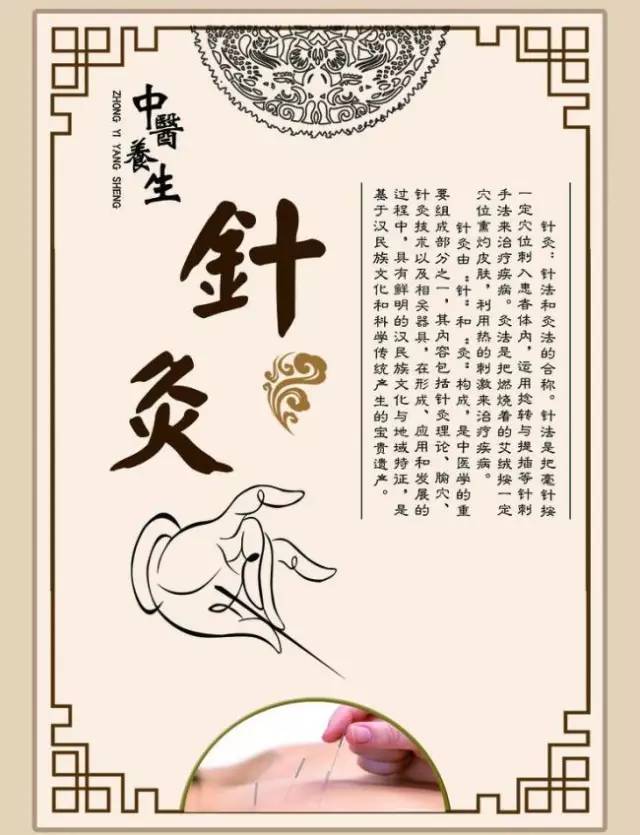 Advantages of Acupuncture TherapyUnblocking MeridiansThe role of unblocking meridians is to allow obstructed meridians to function normally, which is the most fundamental and direct therapeutic effect of acupuncture. Meridians “internally connect to the organs and externally connect to the limbs,” with the circulation of Qi and blood being one of their primary physiological functions. When meridians are blocked, the flow of Qi and blood is obstructed, clinically manifesting as pain, numbness, swelling, and bruising. Acupuncture selects appropriate acupoints and needling techniques, such as three-edged needles to induce bleeding, to ensure smooth meridian flow and normal Qi and blood circulation.Harmonizing Yin and YangThe role of acupuncture in harmonizing Yin and Yang is to transform the body from a state of imbalance to a balanced state, which is the ultimate goal of acupuncture treatment. The mechanisms of disease occurrence are complex, but can generally be summarized as an imbalance of Yin and Yang. The harmonization of Yin and Yang through acupuncture is achieved via the Yin and Yang attributes of the meridians, the compatibility of acupoints, and the techniques of needling.Supporting the Right Qi and Expelling EvilThe role of acupuncture in supporting the right Qi and expelling evil is to assist the body’s righteous Qi and eliminate pathogenic factors. The process of disease occurrence, development, and resolution is essentially a struggle between the right and the evil. The therapeutic effect of acupuncture lies in its ability to support the right Qi and expel evil.
Advantages of Acupuncture TherapyUnblocking MeridiansThe role of unblocking meridians is to allow obstructed meridians to function normally, which is the most fundamental and direct therapeutic effect of acupuncture. Meridians “internally connect to the organs and externally connect to the limbs,” with the circulation of Qi and blood being one of their primary physiological functions. When meridians are blocked, the flow of Qi and blood is obstructed, clinically manifesting as pain, numbness, swelling, and bruising. Acupuncture selects appropriate acupoints and needling techniques, such as three-edged needles to induce bleeding, to ensure smooth meridian flow and normal Qi and blood circulation.Harmonizing Yin and YangThe role of acupuncture in harmonizing Yin and Yang is to transform the body from a state of imbalance to a balanced state, which is the ultimate goal of acupuncture treatment. The mechanisms of disease occurrence are complex, but can generally be summarized as an imbalance of Yin and Yang. The harmonization of Yin and Yang through acupuncture is achieved via the Yin and Yang attributes of the meridians, the compatibility of acupoints, and the techniques of needling.Supporting the Right Qi and Expelling EvilThe role of acupuncture in supporting the right Qi and expelling evil is to assist the body’s righteous Qi and eliminate pathogenic factors. The process of disease occurrence, development, and resolution is essentially a struggle between the right and the evil. The therapeutic effect of acupuncture lies in its ability to support the right Qi and expel evil.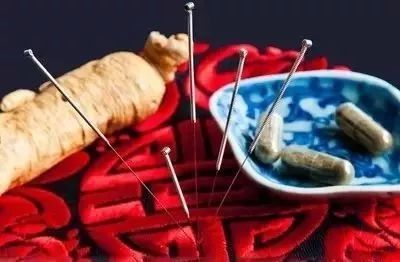 Utilizing the essence of Chinese medicine, which emphasizes harmony between nature and humanity, to benefit the world;With a cultural attitude of compassion and dedication, nurturing people and cultivating the heart. Promoting traditional medicine and creating a harmonious body and mind.Using acupuncture as the primary treatment method, balancing the body and mind, restoring organ functions to fundamentally eliminate diseases.II. Medical Philosophy: Six Principles1. Adhering to Unique Treatment MethodsThe profound Chinese culture advocates simplicity and efficiency, capable of simplifying very complex issues and solving them with minimal cost and straightforward methods. This applies to treatment as well; acupuncture, as a unique cultural gem of China, is undoubtedly effective, has no toxic side effects, and can comprehensively activate the body’s self-recovery system, playing an irreplaceable role.2. Adhering to Treating the Root Cause, Addressing Both Symptoms and Root CausesEvery issue has a distinction between its surface and essence, which are often not unified. This is particularly evident in the manifestations of human diseases, where the causes of a disease are complex and often hidden, involving multiple organ functions. Our approach should be to understand the problem from the perspective of life, focusing on finding the core reasons based on the laws of life, which is key to solving the problem and is a prominent feature of TCM thought.3. Adhering to Non-Pharmacological TreatmentAll internal medications work by being ingested, which is an external force to solve problems. All external forces have prominent characteristics that exert effects on the body, inevitably leading to side effects, making them passive external therapies; acupuncture acts on the body’s acupoints, akin to pressing keys on a computer keyboard to activate the system. This utilizes our body’s powerful recovery system to restore health, representing an internal cause therapy and an active approach.4. Adhering to Being a Doctor, Not a BusinesspersonAt all times, we hold ourselves to the highest professional ethics of a doctor, aiming to resolve clients’ needs with minimal cost, the most suitable methods, and the most perfect plans. In management, we prefer to shorten operating hours rather than serve clients during treatment times that may be detrimental to health, in pursuit of increasing so-called revenue.5. Adhering to Sterile, Disposable Treatment ToolsWe firmly believe that a doctor’s duty is to protect our health to the greatest extent possible. Acupuncture, this treasure of China, is purely a physical therapy that activates our inherent recovery system without causing any harm to the body. We insist on using disposable sterile instruments to ensure absolute safety.6. Adhering to Returning Traditional Medicine to the PeopleNo matter how good a doctor is, the number of patients they can treat in a lifetime is extremely limited. Their greatest value lies in how many people they help understand how to maintain their health and improve their quality of life. Traditional Chinese medicine originates from the people, and we aim to return effective methods and concepts that can be learned and applied immediately to our brothers and sisters, protecting our families.III. Principles of Acupuncture TreatmentThe human body possesses super-intelligence and perfection, with body and mind being unified and closely interconnected. By stimulating acupuncture points, we can activate the body’s self-recovery functions. Overall, it repairs the deficiencies in the organ systems, replenishing the deficient organs, allowing the five internal organs (五脏, wǔ zàng) and six organs (六腑, liù fǔ), Qi and blood, Yin and Yang to harmonize; locally, it unblocks the meridians, alleviates muscle spasms, ensuring smooth Qi and blood flow, timely metabolizing local edema and metabolic waste, achieving the clinical effect of “where there is flow, there is no pain,” and realizing the TCM diagnostic thought of addressing both symptoms and root causes, thus achieving the goal of treating diseases and promoting health. It is akin to using four ounces to move a thousand pounds, solving the most complex problems in the shortest time and with the least cost, which embodies the wisdom of Chinese culture over thousands of years.IV. Why is Acupuncture So Remarkable?Acupuncture itself is not magical; rather, the mystery lies within our own bodies, which possess a complete defense system and self-recovery system. The reason we continue to live healthily is due to the robustness of this defense system and the normal operation of the self-recovery system. Therefore, if we experience illness, do not panic, despair, or fear; instead, maintain confidence. What you need to do is open your heart; your confidence is a key, and your body’s acupuncture points are the locks that open the door to health. By stimulating these points (akin to pressing keys on a computer), you can activate your self-defense system and self-recovery functions (similar to a computer system). V. Effects of AcupunctureAcupuncture seeks to mobilize the body’s inherent self-healing abilities, unblock meridians, harmonize Yin and Yang, and support the right Qi while expelling evil; it promotes the internal self-healing system to be in optimal condition. It activates mutated or defective functions for self-repair, achieving overall self-balance of bodily functions, fundamentally curing diseases, and creating incredible medical miracles.VI. Differences Between Acupuncture Therapy and Modern Antagonistic Therapies
Utilizing the essence of Chinese medicine, which emphasizes harmony between nature and humanity, to benefit the world;With a cultural attitude of compassion and dedication, nurturing people and cultivating the heart. Promoting traditional medicine and creating a harmonious body and mind.Using acupuncture as the primary treatment method, balancing the body and mind, restoring organ functions to fundamentally eliminate diseases.II. Medical Philosophy: Six Principles1. Adhering to Unique Treatment MethodsThe profound Chinese culture advocates simplicity and efficiency, capable of simplifying very complex issues and solving them with minimal cost and straightforward methods. This applies to treatment as well; acupuncture, as a unique cultural gem of China, is undoubtedly effective, has no toxic side effects, and can comprehensively activate the body’s self-recovery system, playing an irreplaceable role.2. Adhering to Treating the Root Cause, Addressing Both Symptoms and Root CausesEvery issue has a distinction between its surface and essence, which are often not unified. This is particularly evident in the manifestations of human diseases, where the causes of a disease are complex and often hidden, involving multiple organ functions. Our approach should be to understand the problem from the perspective of life, focusing on finding the core reasons based on the laws of life, which is key to solving the problem and is a prominent feature of TCM thought.3. Adhering to Non-Pharmacological TreatmentAll internal medications work by being ingested, which is an external force to solve problems. All external forces have prominent characteristics that exert effects on the body, inevitably leading to side effects, making them passive external therapies; acupuncture acts on the body’s acupoints, akin to pressing keys on a computer keyboard to activate the system. This utilizes our body’s powerful recovery system to restore health, representing an internal cause therapy and an active approach.4. Adhering to Being a Doctor, Not a BusinesspersonAt all times, we hold ourselves to the highest professional ethics of a doctor, aiming to resolve clients’ needs with minimal cost, the most suitable methods, and the most perfect plans. In management, we prefer to shorten operating hours rather than serve clients during treatment times that may be detrimental to health, in pursuit of increasing so-called revenue.5. Adhering to Sterile, Disposable Treatment ToolsWe firmly believe that a doctor’s duty is to protect our health to the greatest extent possible. Acupuncture, this treasure of China, is purely a physical therapy that activates our inherent recovery system without causing any harm to the body. We insist on using disposable sterile instruments to ensure absolute safety.6. Adhering to Returning Traditional Medicine to the PeopleNo matter how good a doctor is, the number of patients they can treat in a lifetime is extremely limited. Their greatest value lies in how many people they help understand how to maintain their health and improve their quality of life. Traditional Chinese medicine originates from the people, and we aim to return effective methods and concepts that can be learned and applied immediately to our brothers and sisters, protecting our families.III. Principles of Acupuncture TreatmentThe human body possesses super-intelligence and perfection, with body and mind being unified and closely interconnected. By stimulating acupuncture points, we can activate the body’s self-recovery functions. Overall, it repairs the deficiencies in the organ systems, replenishing the deficient organs, allowing the five internal organs (五脏, wǔ zàng) and six organs (六腑, liù fǔ), Qi and blood, Yin and Yang to harmonize; locally, it unblocks the meridians, alleviates muscle spasms, ensuring smooth Qi and blood flow, timely metabolizing local edema and metabolic waste, achieving the clinical effect of “where there is flow, there is no pain,” and realizing the TCM diagnostic thought of addressing both symptoms and root causes, thus achieving the goal of treating diseases and promoting health. It is akin to using four ounces to move a thousand pounds, solving the most complex problems in the shortest time and with the least cost, which embodies the wisdom of Chinese culture over thousands of years.IV. Why is Acupuncture So Remarkable?Acupuncture itself is not magical; rather, the mystery lies within our own bodies, which possess a complete defense system and self-recovery system. The reason we continue to live healthily is due to the robustness of this defense system and the normal operation of the self-recovery system. Therefore, if we experience illness, do not panic, despair, or fear; instead, maintain confidence. What you need to do is open your heart; your confidence is a key, and your body’s acupuncture points are the locks that open the door to health. By stimulating these points (akin to pressing keys on a computer), you can activate your self-defense system and self-recovery functions (similar to a computer system). V. Effects of AcupunctureAcupuncture seeks to mobilize the body’s inherent self-healing abilities, unblock meridians, harmonize Yin and Yang, and support the right Qi while expelling evil; it promotes the internal self-healing system to be in optimal condition. It activates mutated or defective functions for self-repair, achieving overall self-balance of bodily functions, fundamentally curing diseases, and creating incredible medical miracles.VI. Differences Between Acupuncture Therapy and Modern Antagonistic Therapies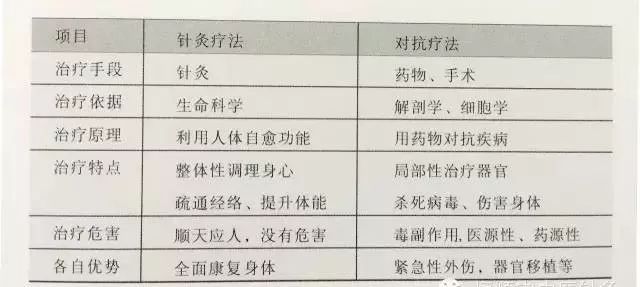
Note: Click to follow the public account below for free video learning
Shang Han Lun (伤寒论), Wen Bing Xue (温病学), Jin Gui Yao Lue (金匮要略), Huang Di Nei Jing (黄帝内经), Shen Nong Ben Cao Jing (神农本草经), Yi Jing (易经), Foundations of TCM, TCM Diagnosis, Chinese Pharmacology, Formula Studies, Acupuncture and Tuina, TCM Internal Medicine, TCM Gynecology, TCM Pediatrics, Meridian and Acupoint Studies… Anatomy, etc.

